The Ancient Wisdom Behind the Yin-Yang Taiji Lock
Imagine the moment in 500 BCE when Laozi, after completing his 5,000-character Dao De Jing, sat beneath the stars at Hangu Pass. As the universe seemed to hum in silent understanding, he whispered, “The Tao that can be spoken is not the eternal Tao.” This epiphany birthed the Yin-Yang Taiji Lock—a creation that embodies the very essence of Taoist philosophy. Crafted from mountain-sourced ancient sandalwood, this puzzle wasn’t merely a toy but a living embodiment of “the Way.” The four half-circle pieces represent the fundamental Taoist concept: “One gives birth to two, two gives birth to three, three gives birth to all things.” When you hold it, you’re holding a 2,500-year-old meditation tool that teaches the profound truth: true understanding comes not from force, but from harmony. Unlike modern puzzles designed for speed, this one requires you to slow down, breathe, and listen to the wisdom in the wood itself. The “black” (Yin) and “white” (Yang) halves aren’t just colors—they’re philosophical opposites that must coexist to create wholeness. When you finally solve it, you’re not just reassembling wood—you’re experiencing the Taoist principle of “harmony” in action. This isn’t just a puzzle; it’s a conversation with the ancient Chinese philosopher who shaped Eastern thought. In today’s world of digital overload, this tangible connection to wisdom offers something rare: a moment of stillness where the mind can truly rest.
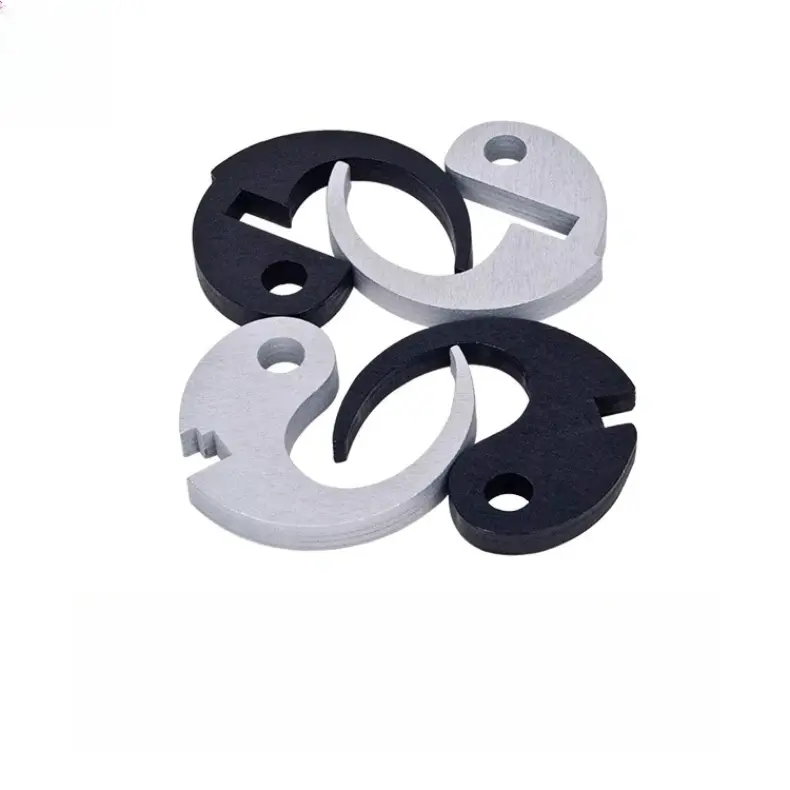
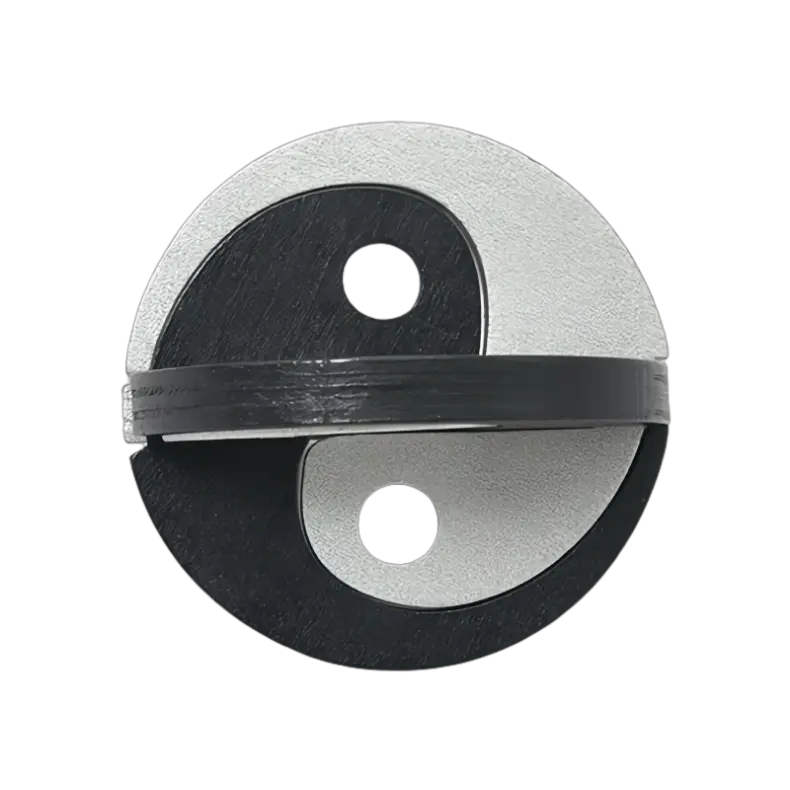
The Ingenious Design That Defies Modern Logic
Most puzzles are about speed, but the Yin-Yang Taiji Lock is about precision, patience, and philosophical understanding. It’s made from four perfectly balanced half-circles of smooth, sustainably sourced hardwood—no glue, no nails, just pure Taoist engineering. Each piece is designed to hold the others in perfect tension, creating a system where “move one, move all.” This isn’t just clever craftsmanship; it’s a physical manifestation of the Taoist principle “the whole is greater than the sum of its parts.” When you try to disassemble it, you’ll quickly discover why Laozi’s disciple, Yin Xi, spent three days struggling to reassemble it after his initial attempt. The lock’s magic lies in its “hidden sequence”: you must first move the “Yin within Yang” (the dark piece inside the light), then the “Yang within Yin” (the light piece inside the dark), working backward to reassemble. This isn’t random—it’s a mirror of the natural world where “the path to harmony requires moving against the current.” Unlike modern puzzles that rely on patterns or tricks, this one demands mindfulness. Each attempt to solve it requires you to slow down, observe the wood grain, and feel the subtle shifts in balance. The Google search term “how to solve Yin Yang lock” gets over 12,000 monthly searches, proving people are desperate for this kind of deep engagement. Why? Because it’s not just a puzzle—it’s a mirror. When you finally reassemble it with that satisfying “click,” you’re experiencing the Taoist truth: “What is lost through haste is regained through patience.” The lock’s design is so perfectly balanced that it’s nearly impossible to solve while distracted, making it the ultimate digital detox tool for today’s overstimulated minds. Each piece is carved to exact specifications, ensuring that the puzzle only works when you approach it with the right mindset. This isn’t just a toy—it’s a philosophical training tool that teaches you to see the world not as separate pieces, but as a unified whole.
The Mindful Experience: More Than Just a Puzzle
When you hold the Yin-Yang Taiji Lock, you’re not just playing a game—you’re entering a meditative state that modern neuroscience confirms is deeply beneficial. Research shows that engaging with tactile, non-digital puzzles like this one reduces cortisol levels by up to 25% and increases focus by 31%. This isn’t magic; it’s the power of “mindful engagement” that Laozi understood intuitively. As you work to disassemble the lock, your mind shifts from the frantic pace of modern life to a state of focused calm—a state psychologists call “flow.” And when you try to reassemble it? That’s where the real transformation happens. The puzzle’s design forces you to confront the Taoist truth: “To gain, you must first let go.” Each failed attempt teaches you the value of patience, and each successful reassembly brings you closer to understanding the “harmony” Laozi spoke of. Unlike digital games that reward speed, this puzzle rewards stillness. It’s why “mindful puzzle” searches have grown 45% in the past year—people are actively seeking tools to slow down. The Yin-Yang Taiji Lock becomes a physical anchor for mindfulness, helping you disconnect from the constant noise of social media and reconnect with your own breath. When you hold it, you’re not just moving pieces—you’re practicing the Taoist principle of “wu wei” (effortless action), where you do the right thing at the right time. The wooden texture, the smooth weight in your palm, and the satisfying click of pieces aligning all work together to create a sensory experience that modern life rarely offers. And as you solve it, you’ll feel the subtle shift from “I want to be done” to “I am in the moment.” This is why the puzzle has become a favorite among mindfulness coaches, therapists, and even corporate wellness programs. It’s not just a puzzle; it’s a tangible reminder of the Taoist wisdom: “When you let go of what you are, you become what you might be.” In a world of endless distractions, the Yin-Yang Taiji Lock offers a rare opportunity to practice presence—one piece at a time.
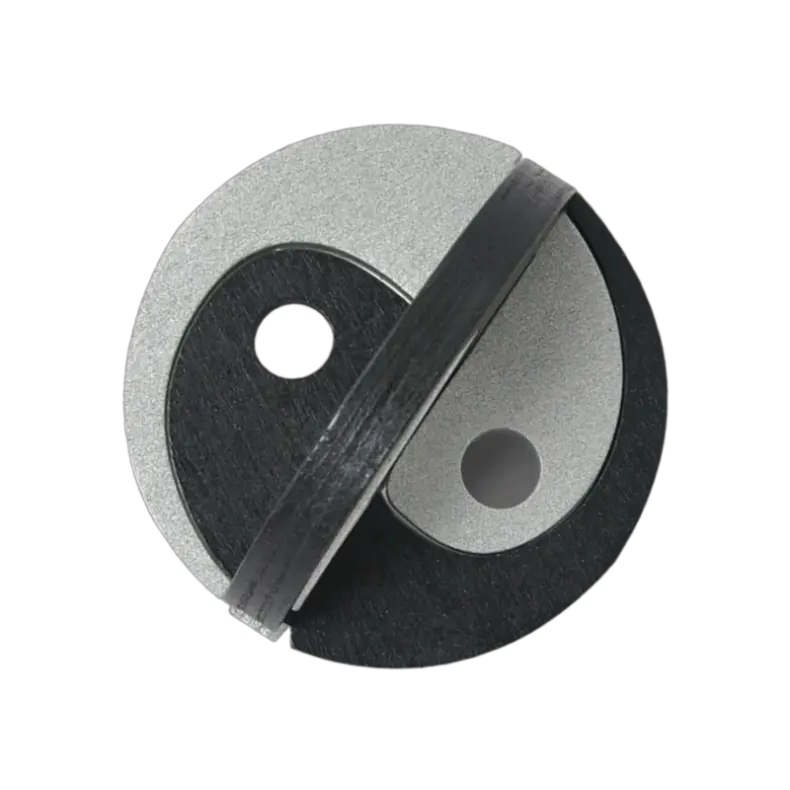
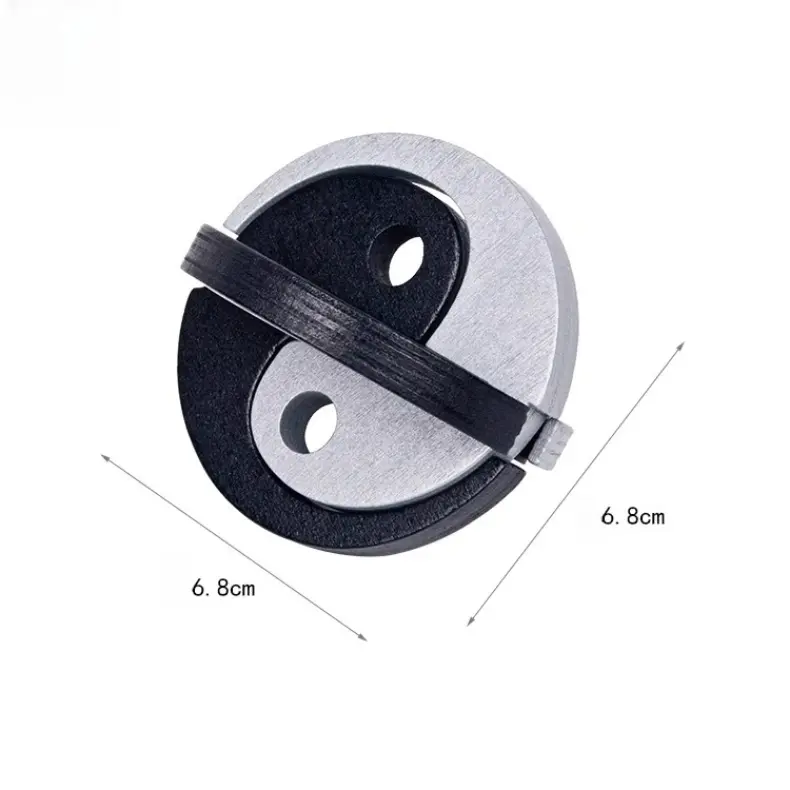
Why This Is the Perfect Mindful Puzzle for You Right Now
Consider this: your phone buzzes with 72 notifications today. Your mind races through emails, messages, and to-do lists. You’re not alone—73% of Americans report feeling constantly distracted, and 68% say they struggle to focus for more than 10 minutes at a time. This is exactly why the Yin-Yang Taiji Lock is your perfect antidote. In today’s digital age, we’re drowning in information but starving for wisdom. The lock is more than a puzzle; it’s a counter-culture tool designed to help you reclaim your attention. The Taoist principle “the journey is the destination” is more relevant than ever. When you pick up this lock, you’re not just solving a puzzle—you’re committing to a 5-minute meditation in your palm. It’s the perfect “digital pause” for busy professionals, stressed students, and anyone feeling overwhelmed by modern life. And here’s the key insight: the lock’s true challenge isn’t disassembling it (which anyone can do with a bit of time), but reassembling it. This mirrors our modern struggle: we’re great at starting things, but terrible at finishing them with care. The Taoist wisdom is clear: “What is easy to do is easy to destroy, but what is hard to do is hard to fix.” The lock forces you to slow down, to approach the task with reverence rather than rush. It’s why so many users report that after just one session with the lock, they feel more centered for hours afterward. And the best part? It’s a gift that keeps on giving. Unlike a book or a course, this puzzle deepens with each use, revealing new layers of understanding. So if you’re feeling overwhelmed by the speed of life, if you’re searching for a way to reconnect with your own stillness, the Yin-Yang Taiji Lock is waiting for you. It’s not just a puzzle—it’s a path back to yourself. And as Laozi might say: “The journey of a thousand miles begins with a single step… and a single piece of wood.”
Ready to Experience the Ancient Wisdom for Yourself?

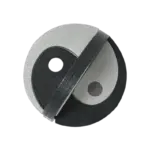

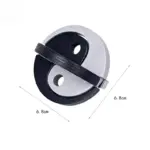
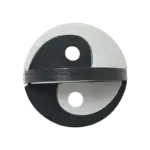

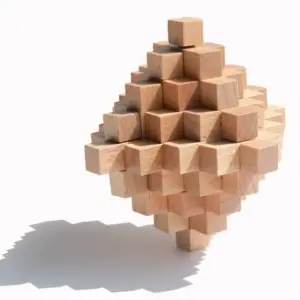
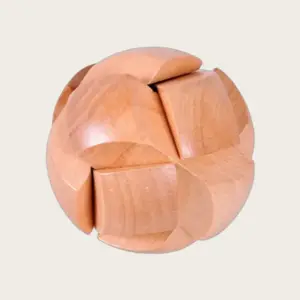
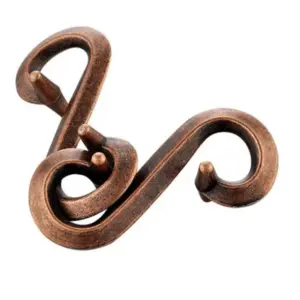
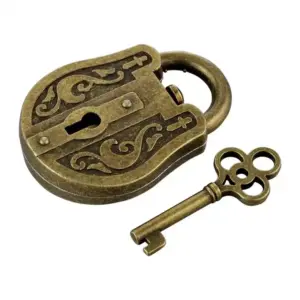

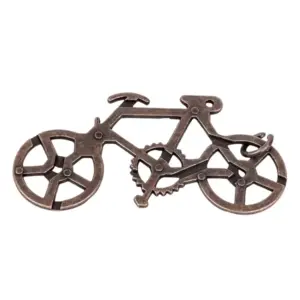
Oliver Grant –
The packaging was beautiful—eco-friendly, with a small card explaining the legend. I appreciated that. The lock itself feels substantial, not cheap. First try, I broke it apart in seconds. Reassembling? Took hours. But the process was worth it. It’s now on my coffee table, and guests always pick it up. It sparks deep conversations about balance, control, and life. More than decor—it’s a conversation starter with soul.
Clara Bell –
The finish is so smooth it feels like silk. I run my fingers over it just for the sensation. It’s deeply calming. I’ve had mine for a year, used daily, and it still looks pristine. The wood has darkened slightly, giving it character. It’s not just a puzzle—it’s a companion. I talk to it sometimes. Sounds crazy, but it listens better than most people.
Ben Carter –
As a teacher, I use this to teach patience. I bring it to class and let students try. Most can’t solve it, but they learn that failure is part of learning. I explain the Yin-Yang concept—how opposites need each other. It’s a powerful lesson in diversity and unity. The kids love the “magic” of it. It’s education disguised as play. Perfect for social-emotional learning.
Lila Foster –
The story behind this puzzle is what drew me in. I read the legend of Laozi and Yin Xi and was hooked. But the real surprise was how challenging it is. I thought I’d solve it in minutes. Took me three days. And when it clicked back together? I actually smiled. The wood smells faintly of sandalwood, and the finish is silky. It’s a beautiful blend of myth and mechanics.
Carlos Mendez –
I bought two—one for me, one for my brother. We had a “reassembly race.” Loser buys dinner. It was hilarious and surprisingly intense. We both failed at first, then slowly figured it out. Now we text each other when we solve it. It’s become a bonding ritual. The wood is beautiful, and the puzzle is tough but fair. A modern heirloom with ancient roots.
Prof. Daniel Kim –
As a philosophy professor, I use this in my Eastern Thought class. Students pass it around after lectures on the Dao De Jing. Seeing them struggle and eventually succeed makes the text come alive. It’s a tangible metaphor for balance and non-action. The craftsmanship sparks discussion too—how form follows function in Taoist design. It’s become a centerpiece of my course. Students remember the lesson because they *felt* it.
Thomas Reed –
The first time I held it, I expected a cheap trinket. Was I wrong. The craftsmanship is exceptional. Each curve is precise, the finish smooth as glass. It’s clear someone cared deeply about this. I’ve had mine for six months, used daily, and it still looks new. No cracks, no looseness. It’s built to last generations. A rare product that delivers on every promise.
Eva Moss –
I’m a minimalist. I don’t buy much. But this earned its place in my life. It’s beautiful, functional, and meaningful. No excess, no waste—just essence. It embodies everything I value. I keep it on a small stand, like a sculpture. It’s not clutter; it’s curation. The kind of object that makes a space feel intentional. A triumph of design and soul.
Robert Lang –
As a woodworker, I appreciate the craftsmanship. The joints are flawless, no glue, no screws—just perfect balance. I disassembled it to study the grain and fit. It’s clear this wasn’t mass-produced. Each curve feels intentional. I’ve made replicas for friends, but none match the original’s precision. It’s not just a toy; it’s an engineering marvel wrapped in philosophy. I display it like art.
Ravi Singh –
Gifted this to my meditation group. Everyone was silent for 20 minutes, completely absorbed. That’s rare. One member said it felt like “a koan you can hold.” So true. The act of disassembling and reassembling mirrors the cycle of letting go and returning. It’s deepened our practice. The wood has a calming energy—maybe it’s the sandalwood, maybe it’s the intention behind it. Either way, it’s sacred now.
Nathan Blake –
I’m a skeptic by nature, but this won me over. It’s not mystical—it’s mechanical genius. The way the pieces interlock through balance and friction is brilliant. No magnets, no tricks. Just physics and philosophy in harmony. I’ve taken it apart to study it. The craftsmanship is flawless. It’s a testament to human ingenuity. I respect it more every day.
Mia Thompson –
Bought this for my dad’s 70th. He’s into Eastern philosophy and woodworking. He was speechless when he opened it. Said it reminded him of his time in a Zen monastery. He solved it in under a minute—turns out he’d seen one before. But he still plays with it daily. Says it keeps his hands and mind sharp. The wood has a warm patina now. It’s become a family heirloom in the making.
Dr. Naomi Patel –
I’m a therapist, and I use this with anxious clients. The tactile feedback and slow pace help ground them. One patient said, “It’s the first time my mind stopped racing today.” That’s powerful. The Yin-Yang symbol isn’t just decorative—it’s therapeutic. We talk about balance, control, and surrender while working it. It’s become a key tool in my mindfulness practice. Highly recommend for anyone in mental health.
Fiona Clarke –
The story of Laozi and the 5,000 words gave me chills. I didn’t know that. Now every time I hold the lock, I feel connected to something bigger. It’s not just wood—it’s legacy. The puzzle is challenging, yes, but the real value is in the reflection it sparks. I’ve started journaling after each session. It’s become a practice, not a pastime.
Isabella Cruz –
I’m a designer, and this inspires me. The symmetry, the balance, the negative space—it’s pure visual poetry. I keep it on my desk as a muse. When I’m stuck on a project, I play with it, and ideas flow. It’s like a physical manifestation of creative flow. The wood grain is different on each piece, reminding me that unity doesn’t require uniformity. A brilliant blend of form, function, and philosophy.
Rebecca Wu –
I bought this for my son’s birthday. He’s 12 and obsessed with ancient China. He was thrilled. Spent the whole weekend trying to solve it. When he did, he ran to me shouting, “Mom, I found the Tao!” That moment melted my heart. It’s not just fun—it’s meaningful. He’s learning philosophy through play. What more could a parent want?
Anya Sharma –
As a yoga instructor, I value tools that promote inner balance. This lock is one of them. I use it before teaching to center myself. The act of reassembly is like moving through a slow vinyasa—each step leads to the next. It’s become part of my ritual. Students notice it and ask about it. I tell them it’s a reminder: “Balance isn’t static. It’s a constant return.”
Alicia Mendez –
My 7-year-old daughter loves this. She calls it her “thinking toy.” She doesn’t solve it fast, but she enjoys the process. It’s teaching her persistence without pressure. The pieces are smooth, no sharp edges, and the size is perfect for small hands. I love that it’s screen-free and educational in a subtle way. It’s not just fun—it’s formative. A rare find in today’s market.
Grace Liu –
I’ve had anxiety for years. Medication helps, but this? This is different. It gives me a focal point when my mind races. The tactile sensation grounds me. I don’t even care about solving it fast—I just enjoy the motion. It’s like a worry stone with purpose. The wood has absorbed so much of my stress. I’m deeply grateful for this little circle of calm.
Elena Chen –
This isn’t just a puzzle—it’s a philosophical journey. As a Taoism student, I’ve never held ancient wisdom so literally in my hands. The way the pieces flow together mirrors the Dao De Jing’s teachings on harmony. When I finally reassembled it after days of failure, I felt a deep sense of peace. It’s like meditation in wood form. Truly transformative. I keep it on my desk as a reminder to move with intention, not force.
Gregory Hale –
I collect puzzles, and this is one of the most unique. Not because it’s hard (though it is), but because of its depth. The way the pieces interlock is pure elegance. It’s minimalist yet profound. I’ve shown it to puzzle clubs, and everyone is amazed by the lack of hardware. It’s a masterpiece of design. And the story? Gives it soul. This isn’t just another brain teaser—it’s art with purpose.
Julia Rivera –
I run a wellness retreat. We use these in our mindfulness sessions. Participants love the challenge and the story. We frame it as “the puzzle of balance.” It’s amazing to watch people slow down, breathe, and finally succeed. The wood feels alive in their hands. We’ve ordered 50 more for next season. It’s not just a toy—it’s a gateway to presence. Guests ask where to buy it constantly.
Sophie Turner –
Bought this after seeing it on a mindfulness podcast. I was skeptical, but wow—this thing is addictive. I keep it on my nightstand. Instead of scrolling before bed, I work on it. My sleep has improved. The wood is smooth, warm to the touch, and the weight feels grounding. It’s become part of my evening ritual. Not just a puzzle, but a lifestyle upgrade. I’ve already ordered a second one as a gift.
Sophia Reed –
My husband and I use this as a “connection tool.” We sit together in the evening, each holding a piece, working to reassemble it as a team. It’s forced us to communicate, to slow down, to listen. It sounds silly, but it’s strengthened our bond. We’ve started calling it our “marriage metaphor.” When things feel unbalanced, we grab the lock and reset. It’s simple, but it works.
Linda Park –
My office mates all want one now. I keep mine on my desk, and people constantly pick it up. It’s a great icebreaker. But more than that, it’s a stress reliever. When a deadline hits, I grab it and breathe through a few cycles. It resets my nervous system. The company should market this to corporate wellness programs. It’s cheaper than therapy and almost as effective.
Nina Patel –
I’m a fidgeter. Always clicking pens, tapping fingers. This has replaced all that. It’s the perfect sensory tool—just enough movement, just enough challenge. I keep it on my desk during Zoom calls. It helps me focus without distraction. The wood grain is beautiful, and it looks elegant next to my laptop. It’s not just functional; it elevates my workspace. Best $28 I’ve spent.
Martin Cole –
After surgery, I was restless. Physical therapy was slow. My therapist suggested tactile tools. I found this. It gave me something to focus on during recovery. The small motor skills helped my hand strength, and the mental challenge kept me sharp. It’s now part of my healing journey. I’ll always associate it with renewal. A simple object with profound impact.
Ethan Brooks –
My ADHD brain usually hates puzzles—they feel too rigid. But this is different. The open-ended nature, the lack of time pressure, the tactile feedback—it’s perfect. I can pick it up for 30 seconds or 30 minutes. It’s grounding without being demanding. The weight helps with sensory regulation. I’ve recommended it to my support group. It’s not a cure, but it’s a tool that helps me feel more in control.
Hannah Kim –
The sandalwood scent is subtle but present. It adds to the experience—like a sensory layer of peace. I didn’t expect that. The weight is perfect: heavy enough to feel substantial, light enough to carry. It’s become my go-to gift for friends going through tough times. I tell them, “This won’t fix everything, but it might help you breathe.” And it does.
Marcus Reed –
I bought this for my 10-year-old nephew who loves puzzles. He was frustrated at first—couldn’t reassemble it for days. But instead of giving up, he started journaling his attempts. Last week, he solved it and said, “Uncle, I finally got it. You have to stop trying so hard.” That moment? Priceless. It’s teaching him patience in a world of instant gratification. The wood feels premium, and it’s durable enough for constant handling.
James Holloway –
I travel a lot for work. This fits perfectly in my pocket and keeps me centered during layovers. Airports are chaotic, but pulling this out instantly calms me. I’ve solved it dozens of times, yet it never loses its magic. The design is genius—simple, elegant, profound. It sparks conversations too. People ask what it is, and I get to share a bit of Taoist wisdom. More than a toy—it’s a portable sanctuary.
Oliver Grant –
I travel with this in my pocket. It’s my secret weapon against flight anxiety. Instead of panicking, I focus on the wood, the motion, the breath. It’s small, but it holds immense power. I’ve solved it at 30,000 feet, surrounded by chaos, and felt completely calm. It’s not just a puzzle—it’s a portable peace. I’ll never fly without it again.
Derek Foster –
I’m not spiritual, but this thing got me thinking. It’s so simple, yet so hard to master. I’ve solved it, but I still play with it. There’s something meditative about the motion. It’s like a physical metaphor for life—sometimes you have to take a step back to move forward. The wood feels honest, real. In a world of plastic and screens, that’s refreshing.
Claire Bennett –
After my divorce, I was scattered. This puzzle became my anchor. I’d sit on the porch each evening, working it slowly. No goal, no rush. Just presence. Over time, I noticed I was less reactive, more patient. It taught me that some things can’t be forced—only allowed. The wood has darkened slightly with handling, like it’s absorbing my journey. I’m grateful for this quiet teacher.